Are you considering purchasing an air duct booster fan? Wondering if they actually work and are worth the investment? You’re not alone. In this comprehensive article, we will answer all of your questions about duct booster fans and provide helpful tips on whether or not they are right for you. We’ll also discuss some of the most common myths about these fans, so that you can make an informed decision before investing in one. Thanks for reading!
What Is a Duct Booster Fan?
A duct booster fan is a small, usually inline, fan that is installed in the ductwork of your home’s HVAC system. The purpose of the booster fan is to increase the airflow through the ducts, which can improve the efficiency of your heating and cooling system and make your home more comfortable.

There are two types of duct booster fans: centrifugal and axial. Centrifugal fans have blades that spin in a circle, like a propeller, while axial fans have blades that spin in a straight line. Centrifugal fans are more common because they are more efficient than axial fans and can move a greater volume of air.
Duct booster fans are powered by either electricity or batteries, and they can be controlled manually or with a thermostat.[4]
Do Duct Booster Fans Work?
The answer to this question is a bit complicated. Duct booster fans can work, but they may not be the best option for your home. Here’s what you need to know about duct booster fans and whether they are right for you.
Duct booster fans are designed to increase the airflow in your ductwork. They are typically installed inline with your existing ductwork and use a small motor to push air through the ducts. Booster fans can be used to improve the efficiency of your heating and cooling system, but they can also create some problems.[1]
Clogged Air Filters
One of the main reasons your HVAC system may not be working as efficiently as it could be is because of a clogged air filter. A clogged air filter will restrict airflow and cause your system to work harder than necessary to move air through your ductwork. Check and replace your air filters regularly to ensure optimal airflow and efficiency.[5]
Blocked Vents
If you have blocked vents or ductwork, this can negatively affect the airflow in your home. In order to improve the airflow, you may need to hire a professional to clean and clear the ductwork. Additionally, you can try using a duct booster fan. Duct booster fans are designed to increase the airflow in your ductwork by creating negative pressure. This will help to move the air through the ducts and into the rooms of your home.
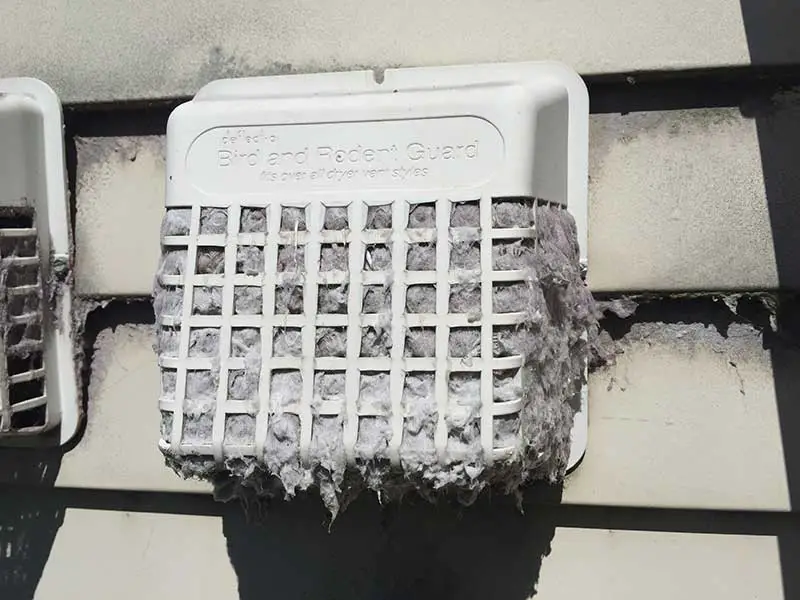
There are many factors that can affect the efficacy of a duct booster fan, such as the size of your home, the number of rooms, and the layout of your ductwork. If you’re not sure whether a duct booster fan will work for your home, we suggest contacting a professional to assess your situation.
Malfunctioning Dampers
If your damper is not functioning properly, your booster fan will not be able to do its job. If you’re unsure whether or not your dampers are working, you can contact a professional to take a look.
Another common issue is that the ducts themselves are too small. This can be a problem regardless of whether you have a booster fan or not. If your ducts are too small, they will not be able to move the necessary amount of air through them, and this can lead to all sorts of problems.[5]
Leaky Ducts
If you have leaky ducts, it doesn’t matter how strong your fan is, it’s not going to make much of a difference. You’ll just be pushing air out of the leaks and into the void beyond. If you’re not sure if you have leaky ducts, hold a tissue up to different spots on your ductwork. If the tissue flutters, you’ve got a leak.[5]
Which Is Better?
There’s no easy answer to this question. It depends on a variety of factors, including the size and layout of your home, your budget, and your personal preferences. Central air conditioners are more expensive to install than ductless mini splits, but they’re also more energy-efficient. Ductless mini splits are easier to install, but they’re not as energy-efficient as central air conditioners.
If you’re trying to decide which is best for your home, it’s important to consult with a professional HVAC contractor. They can help you assess your needs and make a recommendation based on their experience and expertise.[1]
Types of Booster Fans
Inline Booster Fans
An inline booster fan is installed in the main duct line and can be used to boost airflow to multiple branch lines. Inline booster fans are typically more powerful than other types of booster fans, making them a good choice for larger homes or businesses.
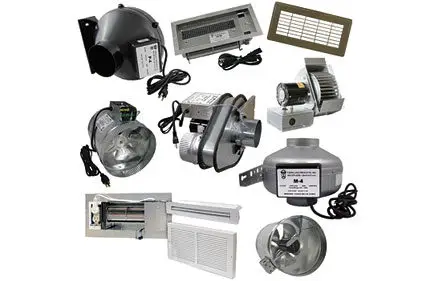
There are two main types of inline booster fans: centrifugal and axial. Centrifugal inline booster fans rely on blades to move air, while axial inline booster fans use a propeller to push air.
Both centrifugal and axial inline booster fans have their pros and cons. Centrifugal fans are more efficient but can be louder, while axial fans are quieter but not as efficient. Ultimately, the best type of fan for you will depend on your specific needs and preferences.[2]
Register Fan
Duct booster fans are one of those things that you see and wonder if they actually work. The answer is, it depends. If your ductwork is properly sized and installed, a booster fan may not be necessary. However, if your ducts are undersized or have leaks, a booster fan can help increase airflow and improve comfort in your home.[2]
Where Booster Fans Work
Register Fans for Ducts in Older Homes
Duct booster fans are designed to be used in specific situations. If you have an older home, your ductwork might not be able to move air as efficiently as it did when the house was first built. Over time, dust, dirt, and other debris can accumulate in the ducts, making it harder for air to flow through them. This can lead to rooms that are farther away from the furnace or air conditioner feeling cooler or warmer than the rest of the house.[2]
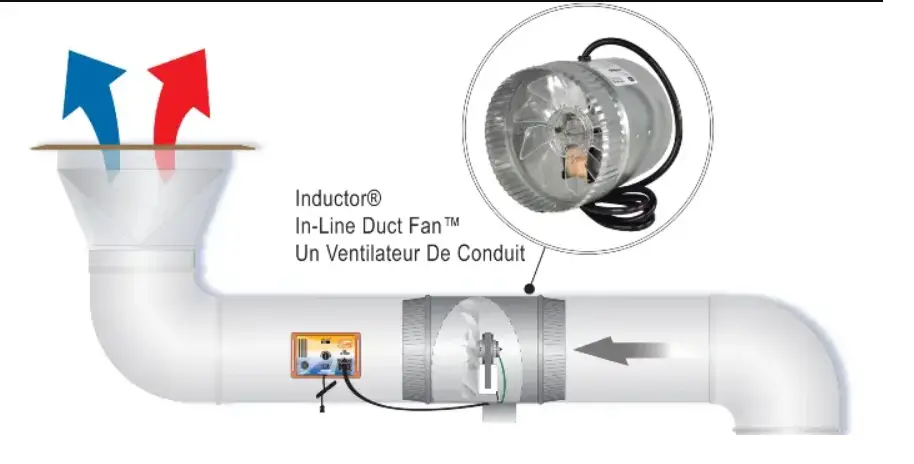
Inline Fans for Complicated Ductwork Layouts
If you have a more complicated ductwork layout, you may need to install an inline fan. Inline fans are installed inside the duct and can be used in conjunction with multiple branch lines. Inline fans are also quieter than other types of fans, making them a good option if noise is a concern.
Installing an inline fan is more complicated than installing a duct booster fan and should be done by a qualified HVAC contractor. Inline fans also require regular maintenance to keep them running properly.[2]
Where Booster Fans Fail
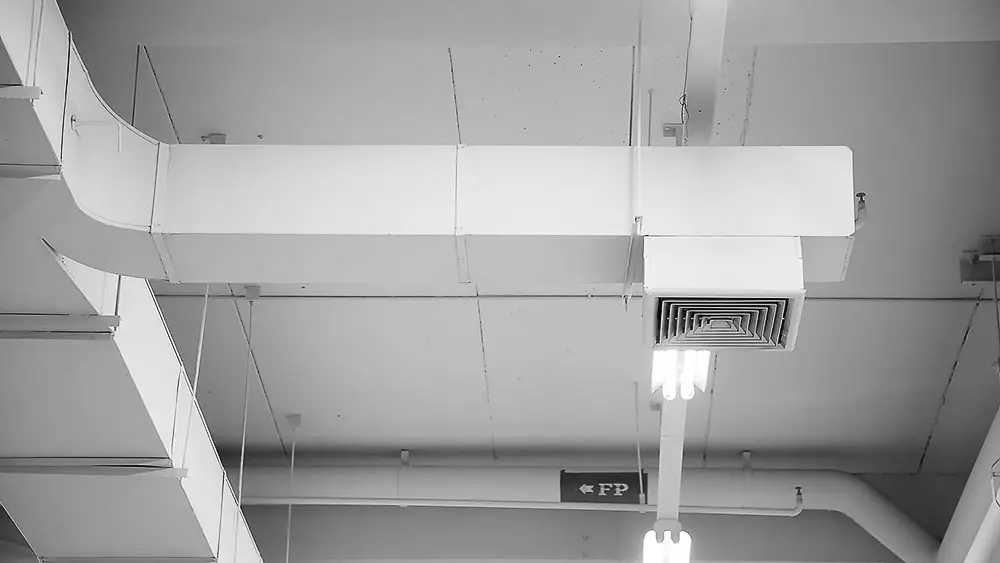
Common HVAC Issues
Booster fans are often promoted as a solution to poor airflow in homes with central heating and cooling. However, there are several common HVAC issues that booster fans cannot solve.
One common issue is that the ductwork itself is too small. This is a problem that must be addressed by a professional, as it requires changing the size of the ducts.
Another common issue is that the vents are blocked. This can be caused by furniture, curtains, or other objects blocking the vents. The best way to fix this issue is to move the obstructions out of the way.
A third common issue is that the air filter is dirty. A dirty air filter will restrict airflow and cause the system to work harder. The solution is to simply replace the air filter.
A fourth common issue is that the ducts are leaky. Leaky ducts can be caused by poor installation, damage, or age. The only way to fix this issue is to have the ducts repaired or replaced by a professional.
A fifth common issue is that the evaporator coil is frozen. This can be caused by a variety of things, such as a dirty air filter, low refrigerant levels, or incorrect airflow. The best way to fix this issue is to call a professional for help.[2]
Poor Air Returns
One common reason that people think they need a duct booster fan is because they have poor air return in their home. This can be caused by a number of factors, but the most common one is that the ductwork itself is too small. If your home has been built within the last few decades, the chances are that your ductwork was sized correctly for the square footage of your home. However, if your home is older, it’s possible that the original ductwork was not sized correctly or has become restricted over time due to debris or other blockages. In this case, a booster fan can help to increase airflow and improve air return.[2]
Signs of Uneven Heating and Cooling
If you’ve ever been in a room that feels stuffy and stagnant, chances are good that the air flow could use a boost. Uneven heating and cooling is one of the most common reasons people install duct booster fans. If you have rooms that seem to be hotter or colder than others, it’s worth investigating whether a duct booster fan could help improve your home’s comfort level.
Another sign that you might need a duct booster fan is if you hear strange noises coming from your vents. If you notice banging, popping, or whistling sounds, it could be a sign of poor airflow. Duct booster fans can help to increase air flow and reduce these types of noises.
Finally, if you notice dust buildup around your vents, it could be another sign of poor airflow. If dust is accumulating in a particular room, it’s a good indication that the air flow in that room could be improved. Duct booster fans can help to increase air flow and reduce dust buildup.[3]
Solve the Root Cause of Uneven Home Heating and Cooling
Before you invest in a duct booster fan, it’s important to make sure that you understand the root cause of your uneven home heating and cooling. In many cases, the problem can be solved without a duct booster fan. For example, if your home has poorly designed ductwork, the best solution is to have the ductwork replaced or upgraded by a professional.

Do You Need a Duct Booster Fan?
If your home or office suffers from poor ventilation, you may be wondering if a duct booster fan can help improve the air quality. Duct booster fans are designed to increase airflow in your ductwork, which can improve the efficiency of your heating and cooling system and help reduce energy costs.[4]
What are the Advantages of Duct Booster Fans?
Boosting Older Ductwork
Older homes weren’t always built with energy efficiency in mind. If you have an older home, your ductwork might not be up to today’s standards. Duct booster fans can help increase the airflow in your ductwork, making it more efficient.[4]

Extra Power for Complex Ductwork Layout
If you have a complex ductwork layout, adding an inline duct booster fan can help to ensure that each room in your home receives the proper amount of airflow. By installing an inline duct booster fan, you can improve the overall efficiency of your HVAC system and make sure that every room in your home is comfortable.[4]
Put Off Costly Repairs
With a little help from a duct booster fan, you may be able to put off costly repairs or replacements of your HVAC system. If your home isn’t getting enough heat or air because of poor airflow, a duct booster can increase the flow of air through your ductwork. This can improve the performance of your HVAC system and extend its lifespan.[4]
Comparison of Indicators for Duct Booster Fans
This table provides a comparison of various indicators related to the effectiveness and performance of duct booster fans. Duct booster fans are used to improve airflow in HVAC systems by increasing air pressure and directing air through ductwork more efficiently. The indicators presented in this table can help evaluate the effectiveness and suitability of duct booster fans for different applications.
| Indicator | Description |
|---|---|
| CFM (Cubic Feet per Minute) | The volume of air moved by the fan in one minute. |
| Static Pressure (inches of water) | The resistance to airflow in the duct system. |
| Noise Level (decibels) | The sound produced by the fan during operation. |
| Power Consumption (watts) | The electrical power required to operate the fan. |
| Size (inches) | The physical dimensions of the fan unit. |
| Weight (pounds) | The weight of the fan unit. |
Explanation:
- CFM (Cubic Feet per Minute): This indicator represents the volume of air moved by the duct booster fan in one minute. A higher CFM indicates a greater airflow and improved performance.
- Static Pressure (inches of water): Static pressure measures the resistance to airflow in the duct system. A duct booster fan with higher static pressure can overcome greater resistance, enabling better airflow through the ductwork.
- Noise Level (decibels): This indicator denotes the sound produced by the duct booster fan during operation. Lower noise levels are generally preferred, especially in residential and office settings where quiet operation is desirable.
- Power Consumption (watts): Power consumption refers to the electrical power required to operate the duct booster fan. Lower power consumption can lead to energy savings and reduced operating costs.
- Size (inches): The physical dimensions of the duct booster fan, typically measured in length, width, and height. Size considerations are important to ensure compatibility with the existing ductwork and installation space.
- Weight (pounds): The weight of the duct booster fan unit. Lighter fans may be easier to handle during installation and require less structural support.
This table provides a concise overview of the key indicators to consider when evaluating duct booster fans. It can assist in making informed decisions based on specific requirements and preferences related to airflow, noise, power consumption, and physical characteristics.
FAQ
Are vent booster fans worth it?
This is a difficult question to answer as it depends on a lot of factors specific to your home. If you have an older home, or one with particularly long or complex ductwork, a booster fan could make a big difference in the airflow throughout your house. However, if you have a newer home with shorter, less complex ductwork, you may not see as much of an improvement. Ultimately, it is up to you to decide whether the potential benefits are worth the cost of purchasing and installing a booster fan.
Where should a duct booster fan be placed?
The fan should be placed as close to the main ductwork as possible. This will ensure that the booster has the most effect on the airflow. If the fan is placed too far away from the ductwork, it will not be able to boost the airflow effectively.
Does a duct booster fan run all the time?
Most booster fans have an automatic shut-off feature that kicks in when the desired air pressure is reached. This means that the fan will only run when it’s needed, and won’t waste energy by running all the time.
How do you increase airflow in ductwork?
There are a few ways to increase airflow in your ductwork. One way is to use a larger diameter pipe. This will reduce the friction loss and allow more air to flow through the system. Another way is to use a higher powered fan. This will also help to move more air through the system. Finally, you can use an inline booster fan. These fans are designed to increase the airflow in a specific area of the ductwork.
Is insulating ductwork worth it?
The answer to this question is a resounding yes! Not only will insulating your ductwork help to keep your home more comfortable, but it will also save you money on your energy bills. By insulating your ductwork, you will be able to reduce the amount of heat that is lost through the ducts. This will lead to lower energy bills and a more comfortable home.
Do duct booster fans improve airflow in my HVAC system?
Yes, duct booster fans can improve airflow in your HVAC system. These fans are designed to increase the velocity of air flowing through your ductwork, helping to push air more effectively to rooms that may be experiencing poor airflow. By increasing the airflow, duct booster fans can improve the overall comfort and efficiency of your HVAC system.
Can a duct booster fan help distribute air evenly throughout my home?
Absolutely! One of the main purposes of a duct booster fan is to help distribute air more evenly throughout your home. If you have rooms that are consistently warmer or cooler than others, a duct booster fan can help by increasing the airflow to those areas, ensuring that they receive the desired amount of conditioned air.
Are duct booster fans easy to install?
Installing a duct booster fan can vary in difficulty depending on your level of expertise and the specific configuration of your ductwork. However, many duct booster fans are designed for easy installation. They typically come with detailed instructions and can be installed directly into the ductwork using simple tools. If you’re unsure about the installation process, it’s recommended to consult a professional HVAC technician.
Can a duct booster fan help improve the efficiency of my HVAC system?
Yes, a properly installed and sized duct booster fan can improve the efficiency of your HVAC system. By increasing airflow to rooms with poor ventilation, you can potentially reduce the strain on your HVAC system. This can result in more balanced temperatures throughout your home and may even help your system operate more efficiently, potentially reducing energy consumption and lowering utility costs.
Are there any limitations or drawbacks to using a duct booster fan?
While duct booster fans can be beneficial in improving airflow, there are a few limitations to consider. Firstly, duct booster fans require a power source, so you’ll need to have an electrical outlet nearby or consider professional installation. Additionally, duct booster fans may increase noise levels in the ductwork, although many modern models are designed to operate quietly. Lastly, it’s important to choose the right size and type of duct booster fan for your specific needs to ensure optimal performance.
Useful Video: MORE HVAC POWER! Improve Ducted HVAC With a Automatic Booster Fan
Conclusion
So, do duct booster fans work? In short, yes – they can be effective in improving airflow to certain areas of your home. However, it’s important to remember that there are a few potential downsides to using them, so be sure to weigh all the pros and cons before making a decision. With that said, if you do decide to use a duct booster fan, following the tips above will help ensure that you get the most out of it. Thanks for reading!
Do you have any questions or comments about duct booster fans? We’d love to hear from you in the comments below!
References
- https://www.industrialfansdirect.com/blogs/info-center/do-inline-duct-booster-vent-fans-work#
- https://www.homereference.net/do-duct-booster-fans-work/
- https://www.aireserv.com/about/blog/2020/september/do-duct-boosters-really-work-/
- https://phyxter.ai/blog/do-you-need-a-duct-booster-fan
- https://www.reliableairandheat.com/blog/do-duct-booster-fans-really-work/










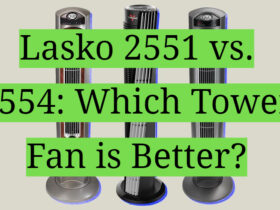
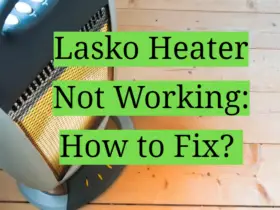
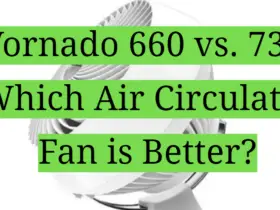
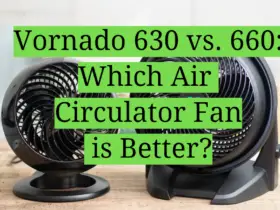
Leave a Reply